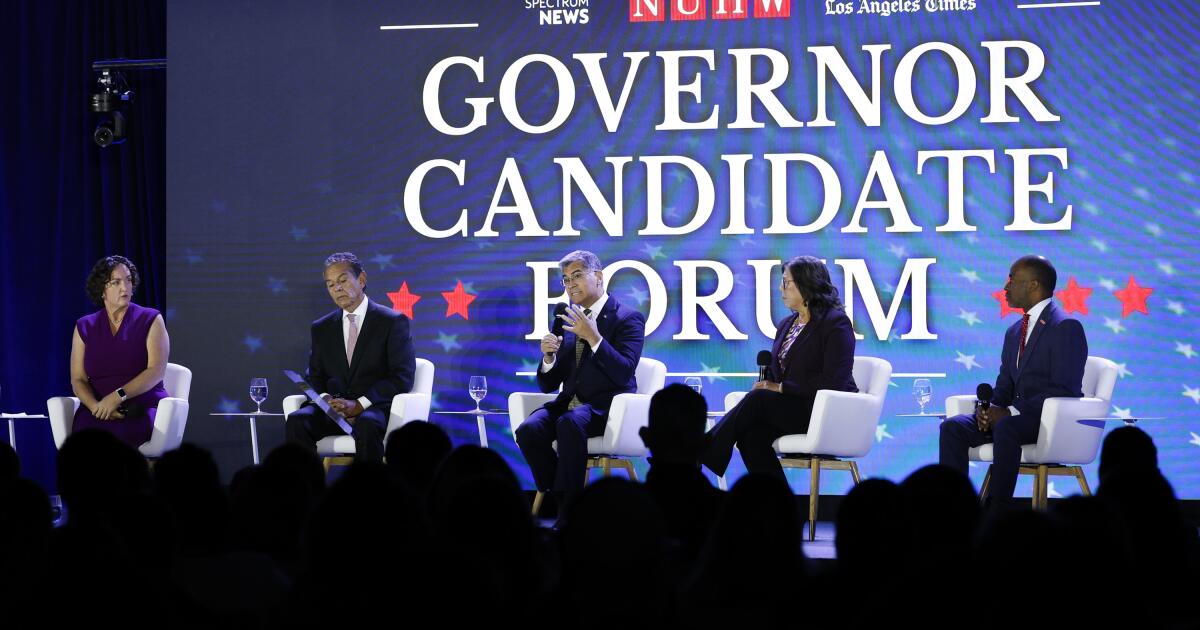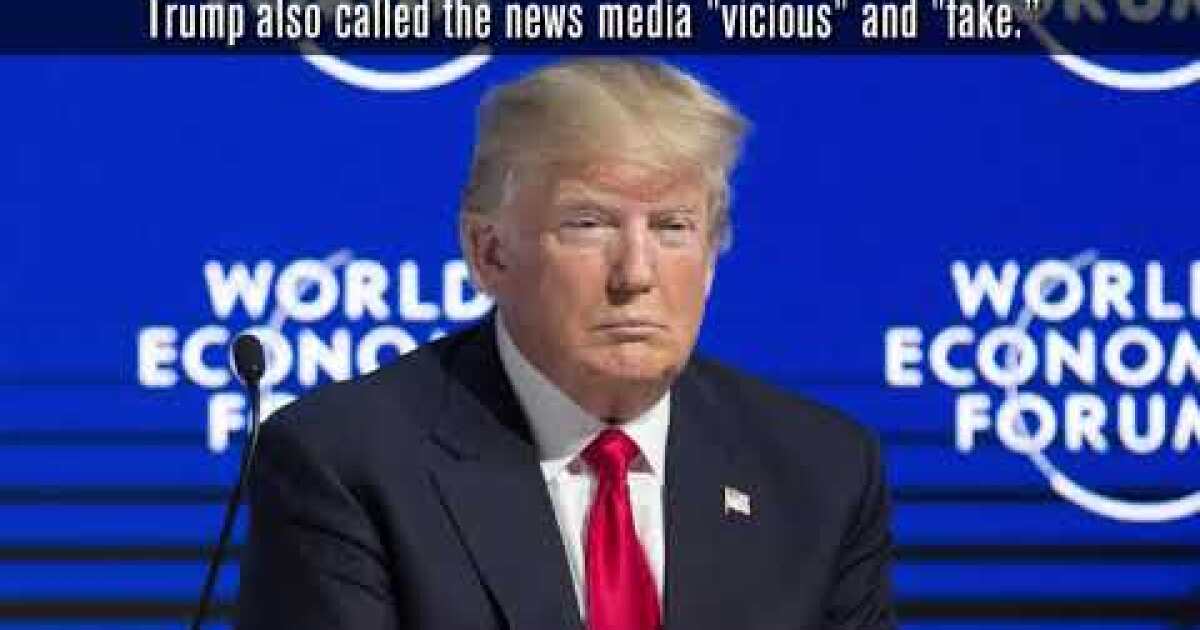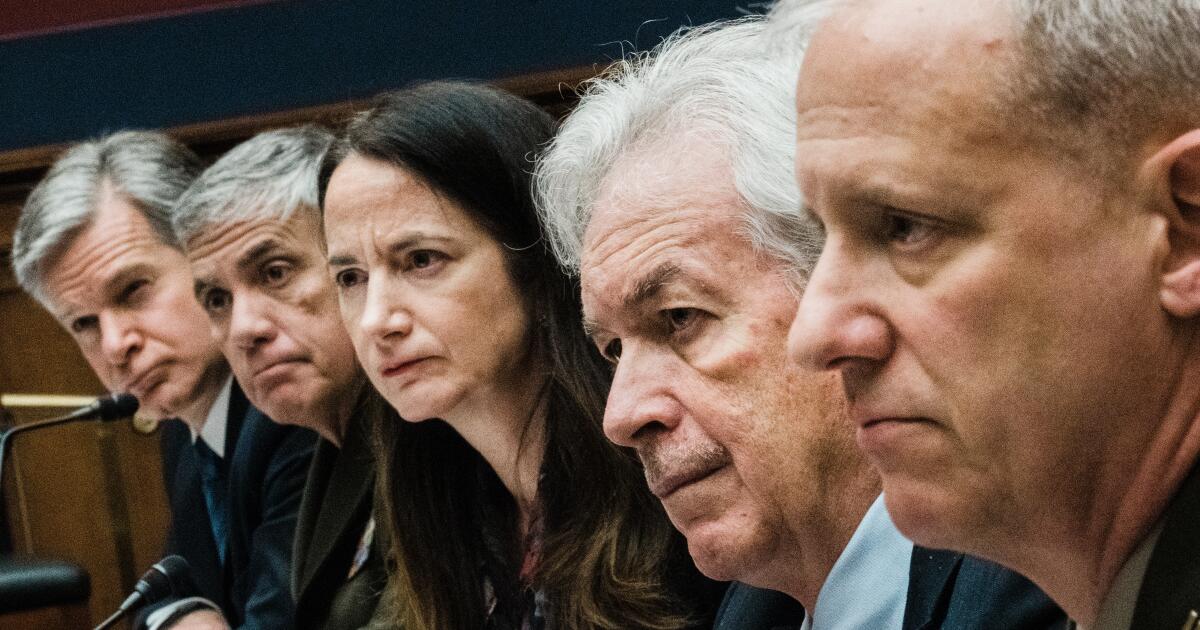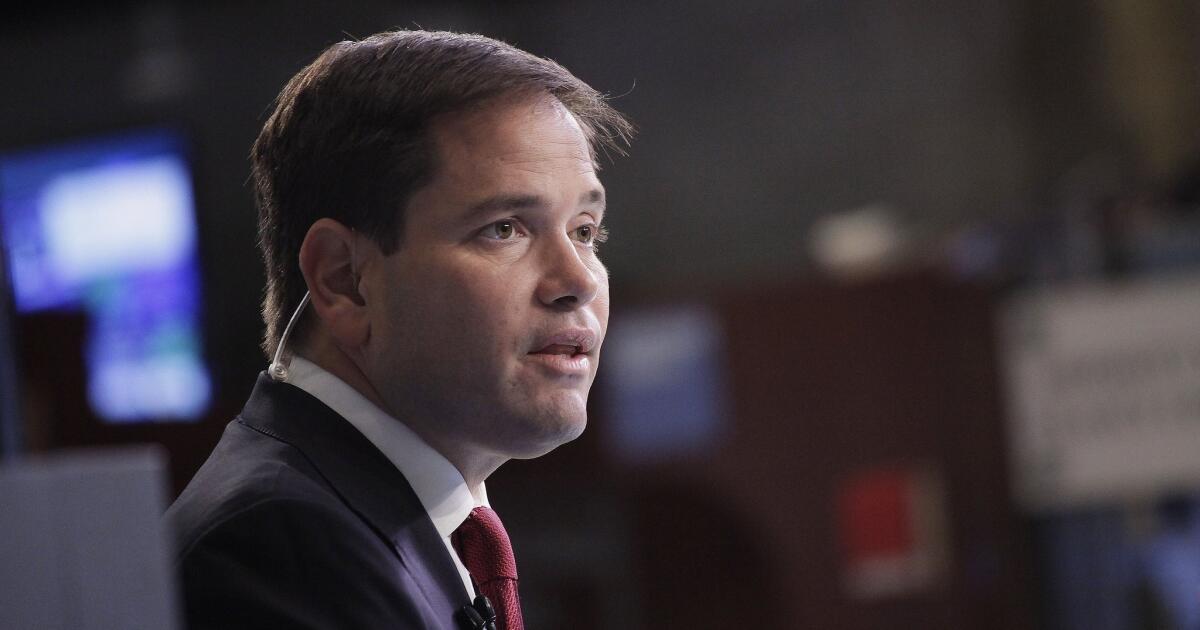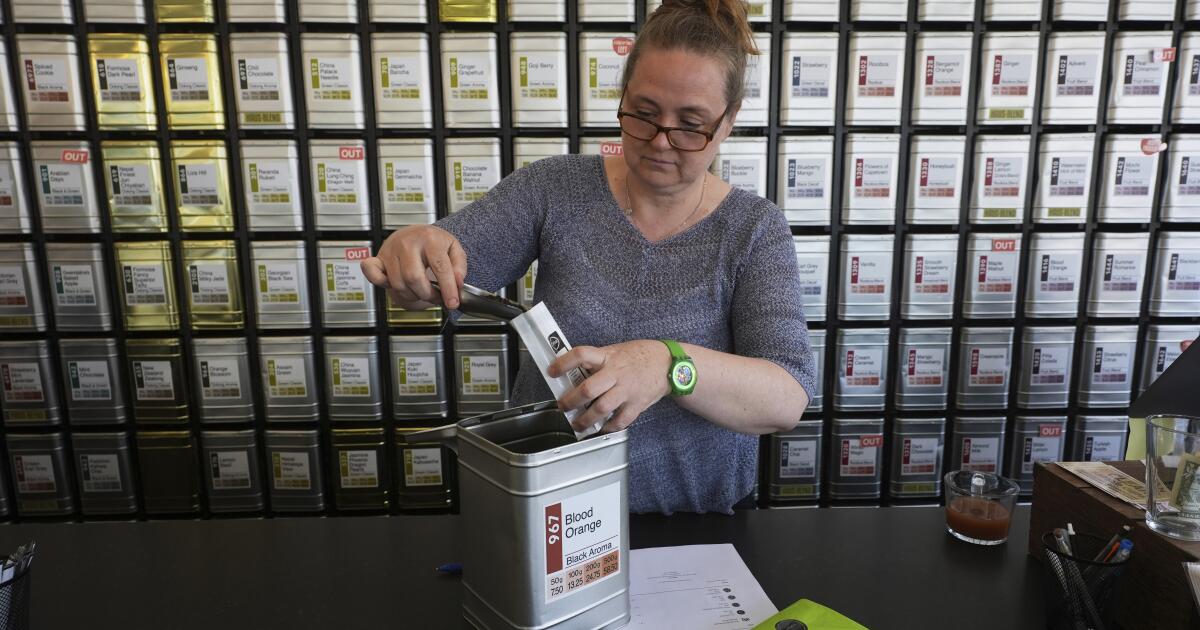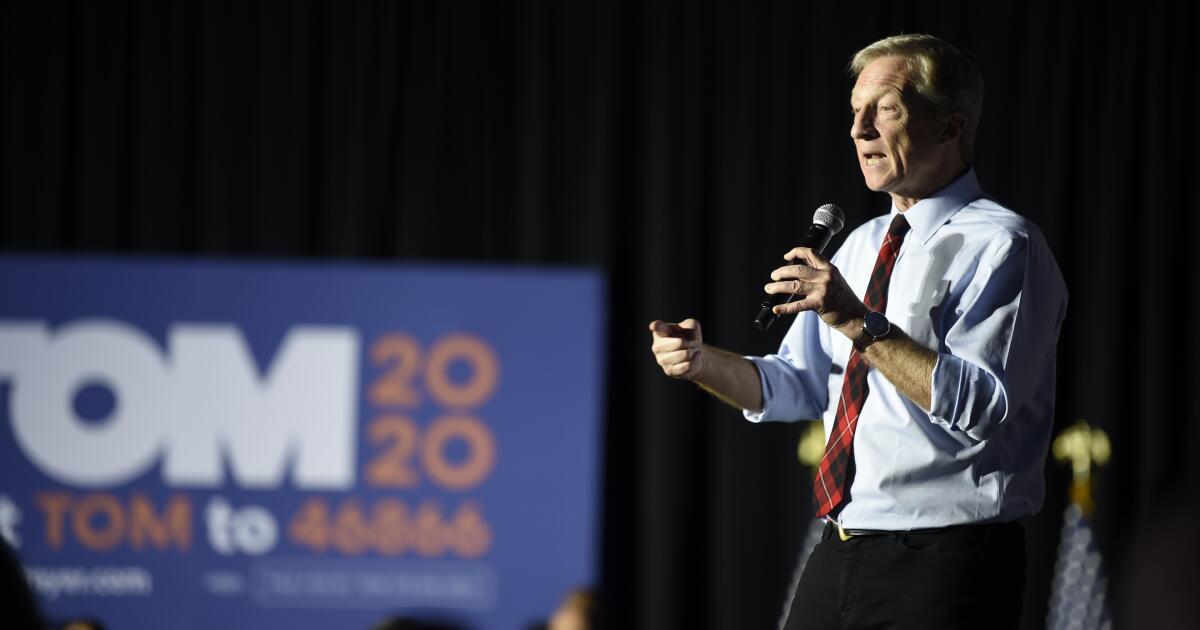SAN FRANCISCO — In a remarkable rise, a San Francisco real estate broker left a checkered past in Hawaii and established herself as an important Democratic fund-raiser with access to some of the country’s most powerful politicians.
Just 18 months after she finished federal probation for income tax evasion, Chong Lo joined a small group of contributors at the White House for a coffee with the president and vice president in 1995.
A month later, President Clinton praised her during a fund-raising luncheon at a Nob Hill hotel. At that moment, the U.S. attorney’s office was preparing to prosecute her for mortgage fraud and the state was on the verge of revoking her broker’s license.
To cap her political ascent, she was elected a delegate to the 1996 Democratic National Convention, although she was not a registered Democrat and had never voted.
Before she was arrested last July on 14 counts of bank fraud, mail fraud and conspiracy, Lo boasted to friends that she had met with Clinton 30 times and visited the White House on seven occasions. Sources said the walls of her office and home were lined with photos of her with the president, vice president and first lady, as well as Sen. Edward M. Kennedy (D-Mass.), California’s U.S. senators, San Francisco Mayor Willie Brown and Republican Gov. Pete Wilson.
Now Lo is a political pariah, and her fund-raising activities have become part of a widening national probe of improper campaign practices and illegal contributions. The FBI is investigating whether any of the campaign money she and others raised through a Bay Area nonprofit group called the Lotus Fund may have come from foreign sources.
With her trial on the mortgage fraud charges scheduled this fall, Lo and her attorney, Tony Serra, refused to discuss her case with reporters. She has pleaded not guilty, and Serra has complained publicly that she had been jailed without bail for two months for unspecified political reasons.
Her story has become a paradigm of modern American politics–of how aggressive fund-raising is rewarded with access to power and encouraged by campaign operatives who appear more interested in collecting contributions than questioning the source. To the Democrats, the emerging political involvement of the Asian community offered a new source of money and votes.
Lo portrayed herself as a community leader and a fund-raiser on a grand scale. Documents show that she and the Lotus Fund pledged to raise more than $500,000 for the Democratic National Committee, but it was unclear how much was collected. She personally contributed $24,000 to various candidates and the DNC, but much of that is being returned because it has been tainted by the fund-raising scandal.
If party officials had dug into Lo’s past, they might have discovered that she once was known as Ester Chung Shung Lo Chu and left Hawaii under a cloud. Records also show that she used at least two Social Security numbers.
The party “did not have a policy of checking everyone out,” said a Democratic official who spoke on condition of anonymity. “There was an attempt to bring in the Asian community, to get that segment of the population active. So they were more inclined not to check.”
Said one of Lo’s political allies: “Nobody knew who she was, but they took her money.”
‘A Tremendous Charmer’
Chong Shung Lo is a locomotive of a woman with a penchant for fine jewelry and clothes. Small of stature, she talks fast, walks fast and eats fast, according to those who know her. Working 16- to 18-hour days, this divorced mother of two kept up a frenetic pace as real estate broker and property manager, traveling the city in her champagne-colored Mercedes. At one point, her home was in elegant St. Francis Wood.
Friends describe her as a charming, if impulsive, woman who speaks her mind. “In life,” she has said, “you have to take risks. I am willing to take risks.”
She was born in the Sichuan province of China, most likely in 1942, although documents show various birth dates. Raised in Shanghai, she has told friends she came from a distinguished family that once included Confucian scholars, an ambassador to Germany and a Qing Dynasty official.
As a youngster, she lived in Hong Kong, Australia and Canada before becoming a naturalized U.S. citizen, sources said. In 1970, as Ester Chu, she was licensed as a nurse in Hawaii but moved into real estate. Her Ester Chu Realty Inc. had offices in Honolulu and Hong Kong, documents show.
“She was a tremendous charmer,” said Robert Taylor, a Honolulu businessman who worked in her office part time and parted company with her over a property dispute. “A great salesperson. It’s just that she misled some people.”
Her troubles centered on her role as managing partner in two condominium projects in Honolulu and on the Big Island of Hawaii. By 1984, the local real estate market had turned sour and both partnerships were in bankruptcy.
That year the Hawaiian Real Estate Commission filed a complaint against her and Ester Chu Realty for allegedly making misrepresentations to clients, exaggerating sales figures on faltering projects, failing to return renters’ security deposits and putting clients’ money in her personal account.
During the three years it took the commission to revoke her license, Chu explored business opportunities in China. In 1985, she told acquaintances, she developed a hotel in a joint venture with the Chinese government.
The Internal Revenue Service began investigating her. In 1988, the government charged her with reporting a $39,750 income loss in 1981 when she had actually made more than $290,000.
After moving to Las Vegas, she pleaded guilty to one count of tax evasion, was sentenced to five years’ probation, fined $5,000 and barred from working in real estate without her probation officer’s permission. It is unclear whether such permission was granted.
Lawsuits and an FBI Probe
As Chong Lo, she established herself as a real estate broker in California. But she fell into trouble again.
A tenant of a San Francisco apartment Lo managed charged in a lawsuit that she demanded he vacate the premises. When he refused, the lawsuit said, a man later threatened to kill him and threw a padlock, breaking two of the tenant’s teeth. The case was settled for an undisclosed amount, according to the plaintiff’s attorney. Lo’s attorney confirmed the settlement but declined to comment further.
In another suit, charging Lo and others with misrepresentation and breach of contract, a couple from Pacifica, Calif., said they lost their home because of a complicated loan deal that required them to deed the house to an associate of Lo. In a response, Lo said she had little to do with the transaction. The lawsuit, filed in 1990, remains unresolved.
By 1991, the FBI was investigating allegations that Lo, as chief financial officer for Able-Tao Financial Inc., was involved in an elaborate mortgage fraud scheme. The scheme allegedly included falsifying pay stubs and W-2 forms of borrowers who would not otherwise qualify for loans. To verify nonexistent jobs or salaries, banks were allegedly given the number of a phone in the same building as the Able-Tao offices, according to records and interviews.
That October, FBI agents, armed with a search warrant, raided Lo’s office, removing boxes of loan files and other papers.
While the investigation went on, Chong Lo plunged into the world of politics.
‘She Knew Everybody in Town’
Lo has told acquaintances that she was nonpartisan but admired Clinton because he successfully overcame his humble beginnings. She saw the president for the first time at his January 1993 inauguration, she told them.
Meanwhile, Lo joined the Lotus Fund, which was formed the previous year to unite Asian American and Pacific Islander communities behind candidates and issues.
It included such prominent people as Ginger Lew, who was named deputy administrator of the Small Business Administration under Clinton, and Michael J. Yamaguchi, who was appointed U.S. attorney in San Francisco by Clinton. It was Yamaguchi who would sign the bank fraud indictment of Lo last June but later would recuse himself.
While Lo worked her way up to the chairmanship of the Lotus Fund, she made political contributions, including $1,750 to state Treasurer Kathleen Brown’s bid to unseat Gov. Wilson in 1994. Lo contributed $400 to Wilson as well. But records show that most of her donations went to Democrats–$500 to U.S. Sen. Dianne Feinstein, $1,350 to Sen. Barbara Boxer and $9,500 to the Democratic Senatorial Campaign Committee.
“She definitely was able to get her foot in the door. She knew everybody in town,” said Bill Ong Hing, visiting law professor at UC Davis, who has known Lo for five years and whose sister, Grace, is a Lotus Fund founder.
Hing, who attended a fund-raiser featuring Vice President Al Gore last year at Lo’s invitation, said she relished her connections. “She fell into the category of Asians who liked to say that they had contact with important people, and the way for her to have greater contact was to give more money,” he said. “I felt badly for her that people dropped her.”
One DNC document said Lo made a commitment to raise $150,000 for the party in 1995 alone.
On the invitation to a September 1995 luncheon at the Fairmont Hotel in San Francisco honoring Clinton and Gore, she is listed as a member of “The National Finance Board of Directors”–an honorific title indicating that she had pledged to raise at least $50,000 for the event, according to a Democratic source.
Clinton publicly thanked Lo, along with Feinstein’s husband, financier Richard Blum; winemaker Ernest Gallo, developer Walter Shorenstein, and Esprit clothing founder Susie Tompkins.
Lo had clearance for at least six White House visits, Washington sources confirm. These included the coffee with Clinton and Gore, as well as several dinners and receptions.
Back home, her legal problems mounted and she emerged as a ubiquitous presence in Bay Area Democratic circles.
The state Department of Real Estate revoked her broker’s license in 1995 for failing to keep adequate records and placing client funds in a non-trust account. A month later, she was granted a restricted license, but officials recently began reviewing it to find whether she failed to disclose her prior felony conviction.
When DNC staff and volunteers needed places to stay, she put them up in her home and an apartment above her business office, which also doubled as Lotus Fund headquarters. Sources said she also supplied visiting Democrats with fresh towels and sheets and use of a friend’s car.
At a party caucus in February 1996, Lo organized supporters to help elect her as a delegate to the Democratic National Convention from the 12th Congressional District. However, records show that she was registered outside the district as a member of the American Independent Party, making her ineligible to be a Democratic delegate.
Former Assemblywoman Jackie Speier (D-Burlingame), who chaired the session, remembered meeting Lo. “I recall the woman specifically because she made a point of showing me a picture of herself taken with President Clinton to establish her credentials.”
There was no attempt to check the party affiliations of those who attended or ran as delegates. “You just take everyone at their word,” Speier said.
Fund Vowed to Raise $400,000 for DNC
Lo soon began organizing an event that propelled her into the public spotlight months before the Washington fund-raising scandal erupted. The nonprofit Lotus Fund, which could legally make political contributions under its state charter, promised to raise at least $400,000 for the DNC.
The group promised that those contributing $12,500 or more to its event would fly to Washington a few days later to meet and be photographed with Clinton.
A May 30, 1996, letter from the DNC’s Northern California finance director, Michael Marubio, appears to confirm that the White House visit was in the works.
However, the Lotus Fund learned that Clinton would appear July 23 at an official DNC fund-raiser in San Francisco. So the group decided to hold its own event that evening at the same hotel, making it convenient for the president to stop by.
There is disagreement among DNC officials about whether the White House committed itself to a Clinton appearance at the Lotus Fund event.
But any possibility of a presidential visit apparently was dashed two weeks before the event when the San Francisco Chronicle reported that a Lotus Fund vice president was facing illegal weapons possession charges.
A few days after the news report, DNC fund-raiser Mark Thomann told Lo and other Lotus Fund leaders that the president would not be appearing at their event. To placate them, he provided 100 free tickets to the party event and said a small group of them could be photographed with Clinton.
The Lotus Fund planned to carry on with its own fund-raiser until Lo was arrested on suspicion of mortgage fraud July 19 and kept in jail until September as a flight risk.
Meanwhile, the San Francisco office of the FBI examined whether the Lotus Fund had committed mail fraud by falsely promising contributors an appearance by the president, FBI spokesman George Grotz said.
However, investigators found that the group’s leaders had good reason to believe Clinton would attend. One important piece of evidence, sources said, was a secretly recorded tape of Thomann apologizing to the group. The mail fraud probe then was dropped.
An FBI task force has continued to look into the origins of political campaign contributions raised by Lo and the Lotus Fund, sources said, to determine whether they were properly reported and whether any came from foreign interests.
Days after Lo’s arrest, the San Francisco Examiner reported that Chong Lo appeared to be Ester Chu, a former Hawaii resident with a tax evasion conviction.
By matching fingerprints and photos, federal authorities now have established that Chu and Lo are the same person, sources said.
Lo has told acquaintances that she never tried to hide her identity: that Chu was her married name, dropped after her divorce, and that among Chinese friends she has always been known as Chong (or Chung) Lo.
Some say she was guarded about her past. Richard Mar, a mortgage loan representative who knew Ester Chu in Hawaii, said he ran into her again in San Francisco several years later. “She told me not to mention Ester, ‘because my name is Chong Lo and I don’t want people to know. . . .’ ”
Lo, who was freed on $100,000 bond, has told acquaintances that she feels bitterness toward the DNC but remains an admirer of Clinton.
She could not attend the national convention in August because she was in jail. But Lo requested court permission to leave the state to attend the Clinton inauguration in January.
A copy of her invitation and a detailed itinerary were submitted–and permission was granted. Lo told acquaintances she got a good seat for the swearing-in and attended an inaugural ball.
Times staff writer Dan Morain and researcher Janet Lundblad contributed to this story.
(BEGIN TEXT OF INFOBOX / INFOGRAPHIC)
Delegate Was No Democrat
Chong Lo, a San Francisco real estate broker with a history of legal problems, was elected a delegate to the Democratic National Convention at a party caucus last year. However, records show that she was not a registered Democrat, as party rules require, and had never voted. This document certifies her election as a Bill Clinton delegate, but she could not attend the convention because she was in jail.














